It's Day 2 of National Pollinator Week.
So, I guess I should "toot my own horn" (we don't have one, but in our household we do have a piano, a double bass, a guitar, a banjo, a ukulele, a dulcimer, a harmonica, a sousaphone, a set of hand drums, and two accordions. Note that the last one to play the piano well was the...um...cat).
Yours truly of the UC Davis Department of Entomology and Nematology, just won a silver award or second-place honors, in a photography competition hosted by the international Association for Communication Excellence in Agriculture, Natural Resources and Life and Human Sciences (ACE). ACE announced the awards today (June 22) at its virtual conference.
To draw attention to the plight of monarchs, I captured (with a Canon MPE-65mm lens) an image of a monarch egg in our family's pollinator garden where we create habitat for assorted bees and butterflies and other pollinators.
“The purpose of my image is to draw attention to the dwindling monarch butterfly population,” I wrote on the form. “They are on life support.” The Xerces Society for Invertebrate Conservation's reports that overwintering monarchs have declined 99 percent in coastal California since the 1990s.
I posted the image at https://bit.ly/3cUx358 Aug. 10, 2020 on my daily (Monday-Friday) Bug Squad blog on the UC Agriculture and Natural Resources website.
Wrote the judge: “Capturing a subject this small is really quite impressive. I appreciate the photographer sharing their equipment and process to capture this image of such a delicate and beautiful little butterfly egg. Very well done.”
The image scored 25 out of 25 points in creativity/originality, audience interest/impact, and overall evaluation.
The egg, I commented, is “an incredible work of nature! The intricate egg is about the size of a pinhead, 0.9mm wide and 1.2mm high. It's creamy yellow with narrow longitudinal ridge. Unless it encounters a predator or parasitoid or another life-threatening factor, the egg will usually hatch 3 to 4 days after Mama Monarch deposits it beneath a milkweed leaf.”
“A good place to see butterfly specimens from all over the world is at the Bohart Museum of Entomology (now temporarily closed due to the COVID-19 pandemic)," I added. “Of the nearly eight million specimens in the Bohart, some 500,000 are in the Lepidoptera collection, curated by entomologist Jeff Smith.“ I also drew attention to the butterfly-rearing process of Bohart associate and natural historian Greg Kareofelas.
In addition to the silver award, yours truly won a bronze award or third-place honors for my image of a photo series of male and female Gulf Fritillaries, Agraulis vanillae, “keeping busy.” The Bug Squad post, “Fifty Shades of Orange, with a Touch of Silver,” appeared July 13, 2020 at https://bit.ly/2Q6cU3q.
Wrote the judge: “This submission was a delight! I adored the written piece that accompanied the photos, describing the insect wedding during COVID times. To take notice of these delicate creatures, which many people just pass by without noticing, and to document them in photos is unique…. When photographing subjects of this size, the tack-sharp focus which captures the details that our eyes cannot normally see is what makes them so captivating. It's also incredibly difficult to capture--the photographer did a lovely job.”
“So there they were," I wrote. "The two of them. The blushing bride and the quite dapper-and-dashing groom. They didn't invite me to their wedding. I was an uninvited guest, the only guest. So, I felt obliged to crash their wedding and capture some images…Who can resist insect wedding photography? That's about the only wedding photography happening during the COVID-19 pandemic.”
I also drew readers to the research website of butterfly guru Art Shapiro, UC Davis distinguished professor of evolution and ecology, and his information on A. vanillae, (see https://bit.ly/3uw9Yf1) and to specific work of insects “keeping busy” (see https://bit.ly/3rVU1xg) by UC Davis alumnus and renowned macro photographer Alex Wild, curator of entomology at the University of Texas, Austin.
ACE, founded in 1913 primarily for ag communicators, is now an international association of professionals who practice in all areas of communication.
(Editor's Note: Last year, three UC Davis-affiliated communication specialists won a total of six writing or photography awards in the ACE global competition for their work accomplished in 2019 (pre-COVID pandemic). Steve Elliott, communications coordinator for the Western Integrated Pest Management Center, Davis, won one silver (second-place) and two bronze (third-place) for his writing and photography; Kathy Keatley Garvey, communications specialist for the UC Davis Department of Entomology and Nematology, two silvers for her writing and photography; and Diane Nelson, communication specialist for the UC Davis College of Agricultural and Environmental Sciences, won a bronze for her writing.)
Attached Images:
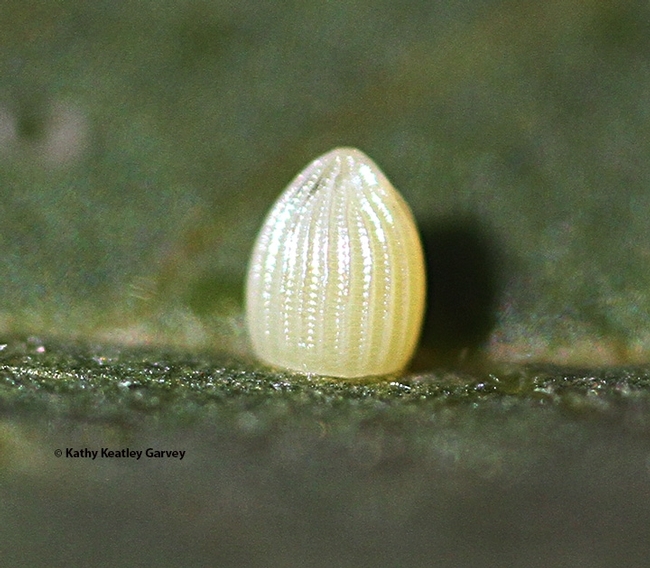
This image of a tiny monarch egg won a silver award in the international Association for Communication Excellence in Agriculture, Natural Resources and Life and Human Sciences (ACE). (Photo by Kathy Keatley Garvey)
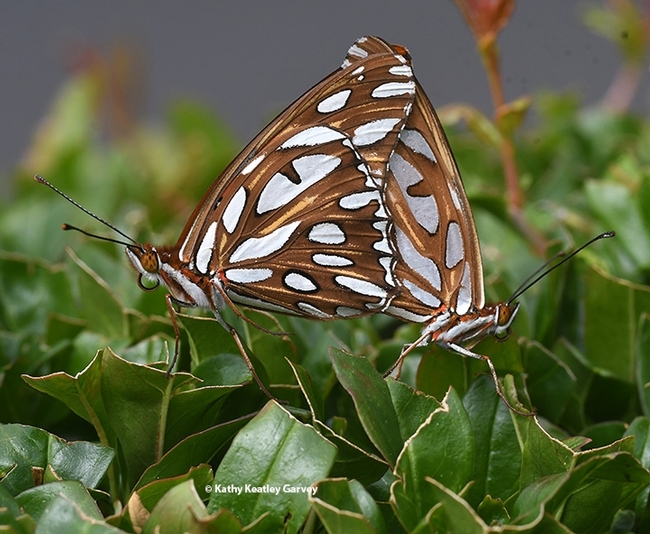
This is the first in a series of images of Gulf Fritillaries that won a bronze award in the ACE competition. (Photo by Kathy Keatley Garvey)
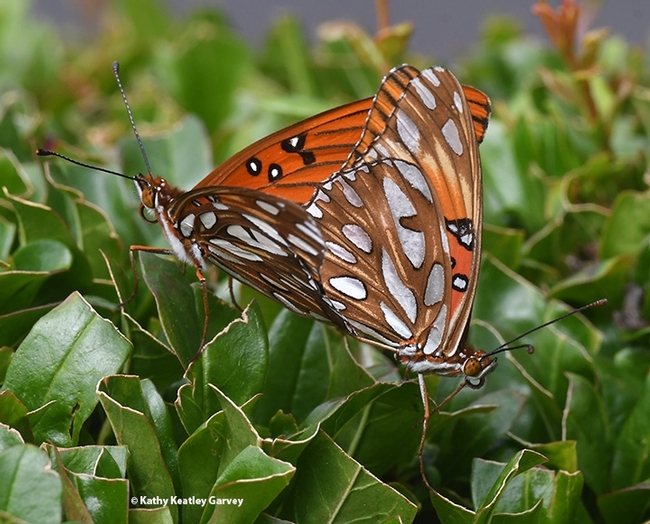
This is the second in a series of images of Gulf Fritillaries that won a bronze award in the ACE competition. (Photo by Kathy Keatley Garvey)
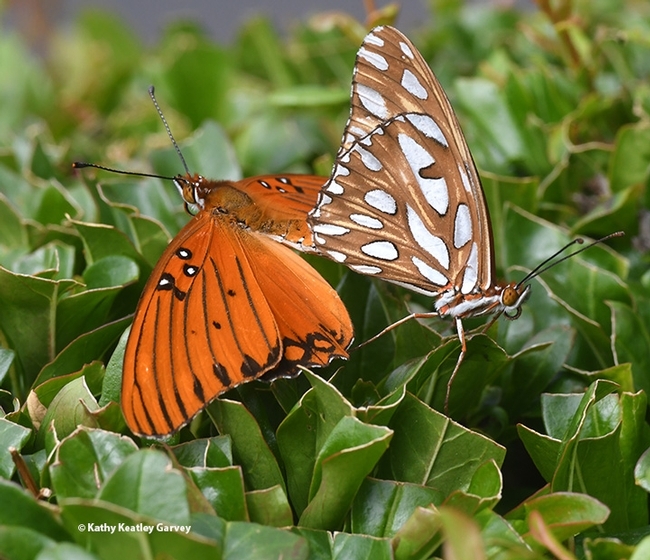
This is the third in a series of images of Gulf Fritillaries that won a bronze award in the ACE competition. (Photo by Kathy Keatley Garvey)
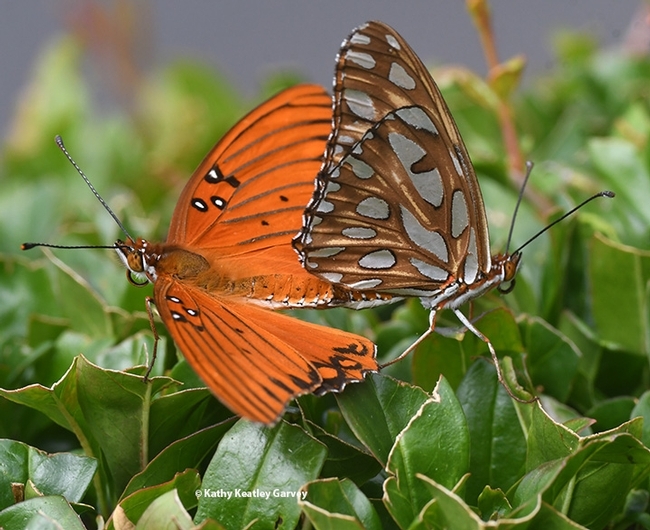
This is the fourth in a series of images of Gulf Fritillaries that won a bronze award in the ACE competition. (Photo by Kathy Keatley Garvey)